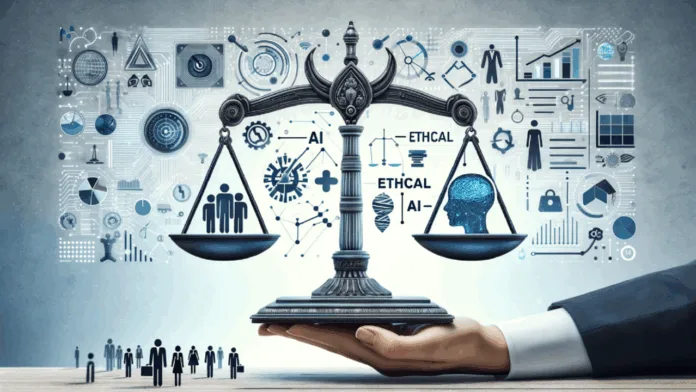
Introduction: The Growing Relevance of AI Ethics in 2025
As artificial intelligence continues to revolutionise industries and everyday life, AI ethics in 2025 has become one of the most critical discussions in the tech world. From predictive algorithms to autonomous decision-making, AI’s expanding footprint requires not just innovation but responsible oversight. The challenge lies in maintaining a balance between rapid advancement and ethical accountability.
While innovation has driven efficiency, cost-saving, and improved decision-making, it also presents risks — from data misuse to algorithmic bias and job displacement. In this article, we’ll explore how businesses, governments, and developers can strike a balance between innovation and responsibility when deploying AI systems.
Read more: https://tickoblogs.blogspot.com/2025/08/top-remaker-ai-features-free-tools-for-creators.html
Why AI Ethics Matters More Than Ever
Artificial Intelligence isn’t just shaping the future — it’s defining the present. With AI models now used in healthcare, finance, recruitment, law enforcement, and education, responsible AI practices are critical. Ethical concerns range from surveillance misuse to biased data inputs that perpetuate inequality.
The demand for ethical artificial intelligence is no longer just philosophical; it’s strategic. Users demand transparency, stakeholders expect accountability, and regulators are enforcing new compliance measures.
The Key Pillars of Responsible AI
1. Transparency
Transparency is central to building trust in AI. It means users should understand how and why decisions are made by AI systems. This is especially important in areas like loan approvals, criminal justice predictions, and job screening.
Companies must ensure AI systems are explainable. Tools that interpret neural networks, decision trees, or even large language models help users and regulators make sense of complex operations.
2. Fairness and Inclusion
AI models trained on historical data may inadvertently reproduce existing societal biases. For example, if past recruitment data discriminated based on gender or ethnicity, AI can replicate that bias.
Ensuring fairness involves curating inclusive datasets, using bias-detection tools, and regularly auditing the model’s output. In 2025, inclusion is not a side feature; it’s a design principle.
3. Privacy and Consent
With data as the fuel for AI, ethical use of personal information is a pressing issue. Whether it’s health data from wearables or voice inputs from smart assistants, consent must be clear, and data must be securely stored.
Stricter AI regulations across the EU, US, and parts of Asia now require AI systems to have robust data governance policies, encryption protocols, and opt-out options.
Regulatory Landscape for AI in 2025
Governments across the globe are racing to regulate AI. The EU’s AI Act, for example, categorises AI applications by risk level and mandates strict requirements for high-risk systems.
Similarly, in the US, proposed frameworks are focusing on responsible use, with emphasis on sectors like healthcare and finance. In India, draft policies aim to promote innovation while setting boundaries on data usage and discrimination.
Such policies help build a baseline for AI transparency, accountability, and fairness, pushing companies toward more responsible development.
Corporate Responsibility: Ethics in Tech Leadership
For tech giants and startups alike, embedding AI ethics in business models is now a competitive differentiator. Organisations are forming internal AI ethics boards, conducting regular model audits, and adopting open-source fairness tools.
Ethical roadmaps now include:
Impact assessments before deployment
Bias checks during training
User feedback loops after deployment
Brands seen as leaders in AI ethics in 2025 enjoy higher user trust, brand loyalty, and reduced legal risks.
Real-World Examples of Ethical Failures
Understanding where things went wrong can guide future success. Some notable failures include:
An AI system in the criminal justice system that unfairly flagged minorities.
A healthcare diagnostic tool that underdiagnosed conditions in women and minority groups due to biased training data.
A recruitment platform that downgraded female applicants due to historical male-dominated hiring data.
Each case served as a lesson on the importance of designing systems that are not just smart — but just.
Innovation Doesn’t Need to Compromise Ethics
Many believe that too much ethical oversight could stifle innovation. But the truth is: ethical artificial intelligence creates better outcomes and longer-term value.
By integrating guardrails early in development, businesses can unlock creativity while ensuring their products respect user rights. In fact, ethical AI tends to be more robust, sustainable, and inclusive — qualities that improve both product performance and public perception.
The Role of Developers, Designers, and End-Users
Ethics isn’t only the job of compliance teams. Developers write the code, data scientists choose the inputs, designers define the user experience, and users provide feedback. Everyone plays a role in shaping responsible AI.
Upskilling tech teams on ethics, diversity, and bias awareness is now part of the corporate learning ecosystem. In 2025, ethics is not a lecture — it’s a daily design decision.
Preparing for the Future of AI Governance
Looking ahead, we’ll likely see:
✅ More stringent AI regulation globally
✅ Mandatory ethics training for AI developers
✅ Cross-sector AI ethics committees
✅ Real-time bias detection built into platforms
By preparing today, tech companies can stay ahead of legal challenges and lead the future responsibly.
Conclusion: A Smarter and Fairer Future
In 2025, AI ethics is not a luxury — it’s a necessity. Balancing innovation with responsibility ensures that artificial intelligence serves everyone fairly, transparently, and securely.
As we enter the next phase of the AI revolution, let’s remember: it’s not just about what we can build — it’s about what we should build.